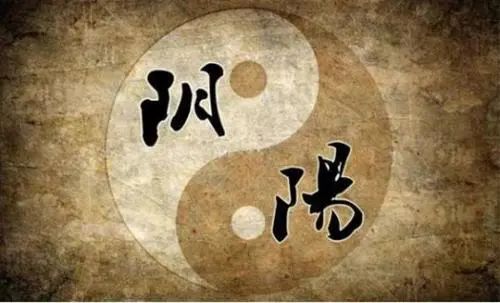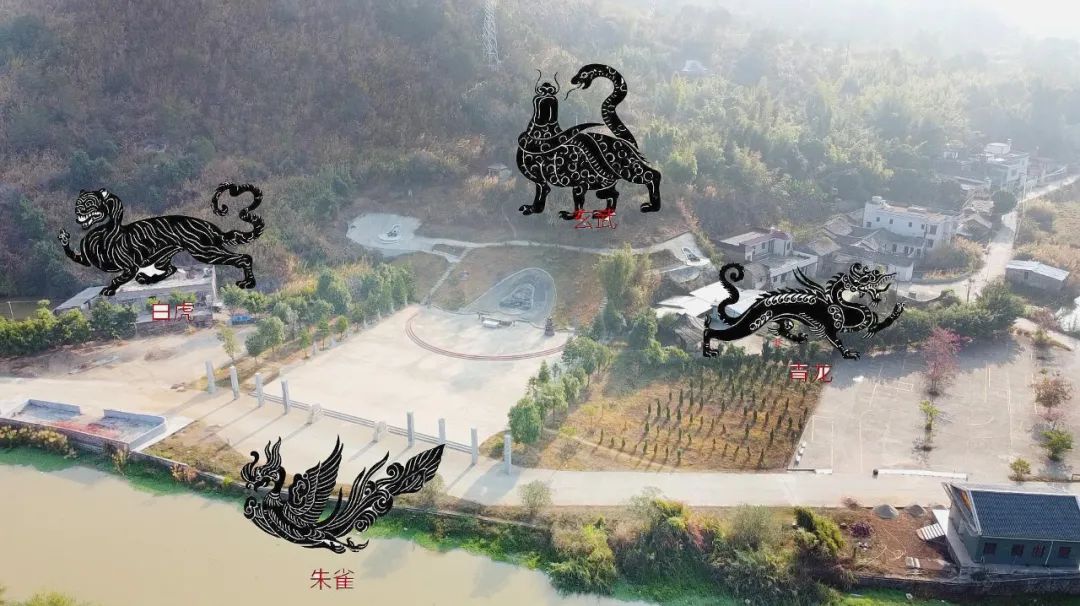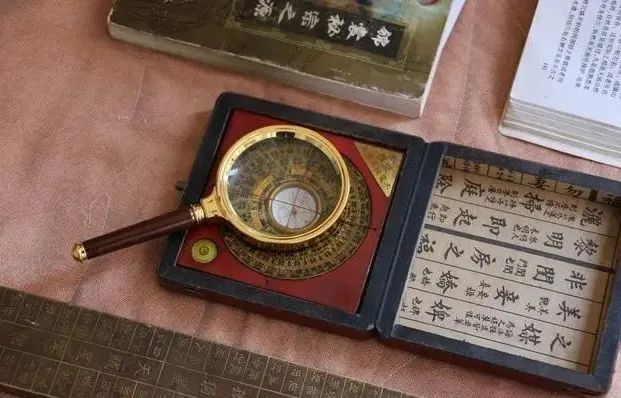
“Women are made of water, men are made of mud,” this is a saying from “Dream of the Red Chamber” by Jia Baoyu, and it is a simple summary of the different emotional natures of men and women in society. Under the influence of the traditional Chinese philosophy of ‘Heaven and Man as One’, mountains, rivers, and people of all ages are imbued with emotions, and only by adapting to nature can one achieve a continuous cycle of life.Recently, my teacher asked me if I had any articles on women’s room Feng Shui, and I promised to look into it. Perhaps due to the historically ingrained idea of male superiority, or the limitation of the saying “Only women and petty people are the hardest to raise”, I found that there are indeed not many articles on this topic. Upon further reflection, I realized that the Feng Shui concept of ‘Yin Dominance and Yang Decline’ has also been turned into a derogatory term in modern society. In light of a Feng Shui case I recently worked on in Hancheng City, it is indeed necessary to analyze the pattern of Yin dominance and Yang decline in Feng Shui.In a certain village in Hancheng, I discovered that the layout of the buildings was quite chaotic, with a clear distinction of high on the right and low on the left, creating a typical Yin dominance and Yang decline pattern.
Causes of the Yin Dominance and Yang Decline Pattern in Feng Shui

01
One cause of the Yin Dominance and Yang Decline pattern is the lack of ‘Three Principles and Five Constants’
In Feng Shui, the dragon vein, the hall, and the water mouth are referred to as the ‘Three Principles’, where the dragon vein represents the wealth and poverty principle, the hall represents the beauty and ugliness of sand and water, and the water mouth represents the principle of life and death. The Five Constants refer to: dragon, cave, sand, water, and direction, where the dragon must be true, the cave must be flat, the sand must be beautiful, the water must embrace, and the direction must be auspicious. Specifically, the main reason for the formation of the Yin dominance and Yang decline pattern in this village in Hancheng is the imbalance of these two natural elements.According to the “Water Dragon Classic”, since the beginning of the universe, mountains and water have been the two great instruments of Yin and Yang, standing majestically between heaven and earth. Mountains are static and Yin, while water is dynamic and Yang; mountains are strong and rigid, while water is weak and soft. Water flows continuously, while mountains remain fixed, just like the heavens cover the four corners and the earth supports all things, with the sun and moon each taking their turn. Only by understanding the natural environment as an organic whole, recognizing that “stone is the bone of the mountain, earth is the flesh of the mountain, and water is the blood of the mountain”, and discerning the difference between Yin and Yang, can one choose an ideal living environment based on the mountains and water.However, the mountain in this village is Xiangshan (a flat dragon of hillock land), said to be the residual energy of Huanglong Mountain (the main dragon vein). The “Geographical Knowledge for the People” states: “When the dragon is strong, the dragon energy remains abundant, and the cave is complete, the mountain’s momentum is difficult to stop, there must be residual energy mountains, either a few miles away or dozens of miles away, merging small caves, depending on their strength, all have their own development.” Such small caves lack vitality, and thus cannot bring long-term fortune; their energy is taken by the main cave, making them likely to be false caves. The local Xiangshan should be a false cave, and since Huanglong Mountain belongs to the Qinling Mountain range, which is the main dragon vein, there is no solid evidence that the local Xiangshan belongs to Huanglong Mountain, how can such a false cave produce outstanding individuals? This also confirms that historically, apart from Sima Qian and Wang Jie, there have been few talents emerging from Hancheng.Upon examining the local topography, the mountain here is a type of mountain that is considered ‘not suitable for burial’ in Feng Shui, characterized by a bad shape and lack of vitality. The village’s burial grounds are located on this mountain, which is quite puzzling. A solitary mountain with no surrounding support can only be used for temples; if used as a burial site, it will lead to a decline in descendants and make it difficult for future generations to excel. Liu Bowen’s “Random Thoughts on Feng Shui” states: “A solitary dragon mountain is not suitable for burial; if buried, it will be difficult for descendants to thrive. Yang Gong’s saying is worth remembering: dragons fear solitude, and caves fear coldness.”The weakness of the mountain dragon leads to Yang decline, while the prosperity of the water dragon results in Yin dominance. The flow of the water dragon also has distinctions; large rivers are the main dragon, while small streams are branch dragons. Li Chunfeng in the “Essentials of Yin and Yang” states: “A flat receiving vein is flat Yang; a height of one inch is a mountain, a depth of one inch is water; if there is a protrusion in the flat, it is considered appropriate.” The local water dragon is not only appropriate but also a main dragon, while the mountain dragon cannot be compared to it; this river is the Yellow River.It can be said that the two great natural instruments here, with the mountain being Yang and the water being Yin, have formed a situation where women are above men. When we worked on a project in a village in Hohhot, we encountered a similar imbalance of Yin dominance and Yang decline, where the local Zijing Mountain was similar to Xiangshan, and the river was the local Huai River, a typical case of the water dragon being more prosperous than the mountain dragon, also resulting in women being above men.
02
Another cause of the Yin Dominance and Yang Decline pattern is the ‘White Tiger Pressing the Green Dragon’
The ‘Four Spirit Mountain Formula’ originates from ancient astronomy’s twenty-eight constellations and is a method of celestial layout, namely “Left Green Dragon, Right White Tiger, Front Vermilion Bird, Back Black Tortoise.”Green Dragon and White Tiger are the left and right sides when looking forward from the mountain of the house, akin to a person extending both arms forward. The left Green Dragon position is Yang, representing males; a strong Green Dragon position indicates a good career prospect for men. The right White Tiger position is Yin, representing females; a strong White Tiger position indicates a good career prospect for women. If the residential layout is skewed to the left or right, resulting in a long Green Dragon and a short White Tiger, or a long White Tiger and a short Green Dragon, it indicates an imbalance of Yin and Yang forces, leading to unequal power dynamics between men and women in the household. The Green Dragon and White Tiger should be balanced; an overly strong White Tiger represents potential disputes.Specifically, in this village in Hancheng, the layout of the residential buildings has the Green Dragon position mainly occupied by a garage and a small courtyard for toilets, which has a clear wind disaster (leading to financial loss and lack of family cohesion, detrimental to males); while the White Tiger position is occupied by the living room, kitchen, and bedrooms, which are the main functional areas and are significantly higher than the Green Dragon position. If the residential layout has the right side higher than the left, meaning the White Tiger is higher than the Green Dragon, as a Yin residence, it would lead to prosperity in the household and career; however, as a Yang residence, it would lead to the family’s downfall, with male careers declining and health suffering.In Feng Shui, the White Tiger is regarded as a god of war and a god of slaughter, and the White Tiger position should be quiet and not active. Typically, the right side of a residence should be lower than the left side, or the buildings on the right should be fewer than those on the left; an overly strong White Tiger indicates a violation of the White Tiger disaster. The uniformly styled buildings in this village all exhibit a clear White Tiger disaster. If a residence violates the White Tiger disaster, the lighter consequences may include frequent illnesses among family members or financial losses due to illness, while the heavier consequences may involve bloodshed or casualties. The health of local males is noticeably weaker than that of local females, with women becoming the backbone of the family.
03
The third cause of the Yin Dominance and Yang Decline pattern is the ‘Scattering of Imperial Power’
The central point of a residential building is crucial for the prosperity and decline of the family, referred to in Feng Shui as the ‘Imperial Power Position’ or ‘Great Imperial Extreme’, which is the core area of ‘vital energy’ and ‘cave eye’ in a residence. This area should be quiet, serene, and tranquil, with all ‘vital energy’ radiating from here throughout the entire residence.The ‘Imperial Power Position’ should be set as a shrine, study, living room, or dining room, and should not be a kitchen, toilet, or dressing room, to avoid disrupting the spread of vital energy and weakening the residence’s vitality. In this village in Hancheng, the ‘Imperial Power Position’ is entirely occupied by the kitchen, reflecting a concept of female supremacy, making it difficult for local men to carve out their own space, as they may not even be able to cross the threshold of their own homes.Additionally, the kitchen belongs to the fire element, corresponding to the Li trigram, and having the kitchen in the ‘Imperial Power Position’ can lead to diseases related to the heart, blood, cardiovascular system, eyes, abdomen, etc., necessitating regular health check-ups. The Li trigram represents fire, and local males tend to exhibit a straightforward temperament but are often restless, as reflected in their driving habits; most successful men are calm and composed.The above three points should be the main reasons for the local Yin dominance and Yang decline; other minor reasons will not be elaborated on due to space constraints. It is worth reiterating that the Yin dominance and Yang decline pattern is originally a neutral and objective phenomenon that requires dialectical application; adapting to the shape and situation to achieve the harmony of Yin and Yang is the key to harmony.In Feng Shui, the so-called shape refers to the shape of the mountain where the cave is located; the situation refers to the various attitudes presented when the dragon vein flows towards the cave site in its undulating course. Only with a situation can there be a shape, and only with a shape can there be a cave. Guo Pu in the “Book of Burial” states: “A thousand feet is the situation, a hundred feet is the shape.” Comparatively, a shape that is close but a situation that is far, or a small shape but a large situation. To recognize its shape, one must first observe its situation.For a house, the mountains and water represent its situation. The selection of a good courtyard or beautiful residence begins with observing the large environment of the mountains and rivers, and by examining the small water sources and veins of the residence, one can understand how the small water flow, small water source, and small environment are constrained and influenced by the larger mountain shapes and mountain ranges.This is similar to how traditional Chinese medicine diagnoses health by feeling the pulse; from the main pulse characteristics such as fullness, thinness, string-like, weak, tight, floating, sinking, fast, and slow, one can determine the health status of the body. Similarly, the water veins in Feng Shui can be examined primarily from the functional state of the large water source’s main artery, allowing one to observe the small water sources and small tributaries’ characteristics of fullness, thinness, reality, emptiness, floating, sinking, speed, and direction, to make perfect designs for site selection, city planning, building houses, and constructing factories.The renowned historian of science and Royal Academy of Engineering Fellow Joseph Needham viewed Chinese Feng Shui as a ‘quasi-science’. He conducted high-level research on Feng Shui and agreed with Chatly’s definition of Feng Shui: Feng Shui is “the art of harmonizing the earthly energy of the living and the dead in the universe.” Needham’s understanding of Feng Shui is that if the grave of the deceased or the residence of the living is not chosen in a reasonable location, various disasters will befall the descendants of the deceased and the residents; conversely, a Feng Shui treasure land will bring blessings and fortune.Every place has its specific terrain and topography, which locally constrains various energy fields. People select and adjust based on the internal and external environments, including direction, auspicious days, location, wind flow, water energy, arrangements, Yin and Yang, and various obvious or potential factors, striving to achieve the realm of ‘following the natural way and the unity of heaven and man’, obtaining the harmony that people yearn for. The invisible power and nature of energy are usually influenced by the positions of celestial bodies, so the Feng Shui of a place should also consider the positions and directions of celestial bodies.Regarding the overall Feng Shui situation of this village, Xiangshan should at least have a temple or Taoist temple built, the Green Dragon position of the residence should be elevated, and the functional areas should be shifted towards the Green Dragon side. Perhaps through comprehensive planning and transformation, the village’s overall prosperity is also a hopeful prospect for the future.
It is worth reiterating that the Yin dominance and Yang decline pattern is originally a neutral and objective phenomenon that requires dialectical application; adapting to the shape and situation to achieve the harmony of Yin and Yang is the key to harmony.In Feng Shui, the so-called shape refers to the shape of the mountain where the cave is located; the situation refers to the various attitudes presented when the dragon vein flows towards the cave site in its undulating course. Only with a situation can there be a shape, and only with a shape can there be a cave. Guo Pu in the “Book of Burial” states: “A thousand feet is the situation, a hundred feet is the shape.” Comparatively, a shape that is close but a situation that is far, or a small shape but a large situation. To recognize its shape, one must first observe its situation.For a house, the mountains and water represent its situation. The selection of a good courtyard or beautiful residence begins with observing the large environment of the mountains and rivers, and by examining the small water sources and veins of the residence, one can understand how the small water flow, small water source, and small environment are constrained and influenced by the larger mountain shapes and mountain ranges.This is similar to how traditional Chinese medicine diagnoses health by feeling the pulse; from the main pulse characteristics such as fullness, thinness, string-like, weak, tight, floating, sinking, fast, and slow, one can determine the health status of the body. Similarly, the water veins in Feng Shui can be examined primarily from the functional state of the large water source’s main artery, allowing one to observe the small water sources and small tributaries’ characteristics of fullness, thinness, reality, emptiness, floating, sinking, speed, and direction, to make perfect designs for site selection, city planning, building houses, and constructing factories.The renowned historian of science and Royal Academy of Engineering Fellow Joseph Needham viewed Chinese Feng Shui as a ‘quasi-science’. He conducted high-level research on Feng Shui and agreed with Chatly’s definition of Feng Shui: Feng Shui is “the art of harmonizing the earthly energy of the living and the dead in the universe.” Needham’s understanding of Feng Shui is that if the grave of the deceased or the residence of the living is not chosen in a reasonable location, various disasters will befall the descendants of the deceased and the residents; conversely, a Feng Shui treasure land will bring blessings and fortune.Every place has its specific terrain and topography, which locally constrains various energy fields. People select and adjust based on the internal and external environments, including direction, auspicious days, location, wind flow, water energy, arrangements, Yin and Yang, and various obvious or potential factors, striving to achieve the realm of ‘following the natural way and the unity of heaven and man’, obtaining the harmony that people yearn for. The invisible power and nature of energy are usually influenced by the positions of celestial bodies, so the Feng Shui of a place should also consider the positions and directions of celestial bodies.Regarding the overall Feng Shui situation of this village, Xiangshan should at least have a temple or Taoist temple built, the Green Dragon position of the residence should be elevated, and the functional areas should be shifted towards the Green Dragon side. Perhaps through comprehensive planning and transformation, the village’s overall prosperity is also a hopeful prospect for the future.

